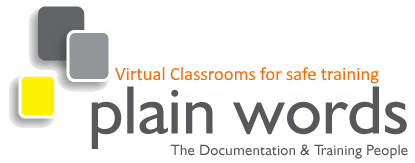Training Bulletin Issue 75
Bestseller meeting minutes – totally a thing?
It's great, isn't it, to sit down with a really good set of meeting minutes and a nice cup of tea. A fascinating read that keeps you turning those pages, carried along by the compelling prose and the thrilling content: will that little change to your purchase process be approved? Will the marketing department have their budget cut? Has the board signed off on the compliance assessment report? Riveting stuff? No, I thought not.
The reality is that meeting minutes are among the most prosaic and functional forms of business writing. We read them like we take medicine: I have to, it's good for me, I want the benefits, but, no, it's not actually a fun process. It's part of the job.
I'm not saying we can turn your meeting minutes into bestsellers, but we can help you make that medicine a bit more palatable. Part of the problem with meeting minutes is that a lot of us are a bit set in our ways about what they need to look like, and that isn't always what makes them the most accessible of documents.
Why do we keep meeting minutes?
We need records of what we did or decided to do and why. Meeting minutes should help organisations transact their activities in the most effective and responsible way and can in some cases be audited to ensure this is happening. People read minutes to find out what is going on, what has been decided, what they need to do. This is all good, necessary stuff so why are they so tedious then?
Part of the problem is that we seem to think that meeting minutes need to be formal, resulting in some pretty ponderous language and a layout that makes it hard to skim and pick out key information. If we refocus on why we keep minutes, and what people need to get from them, we can make them more fit for purpose.
So who reads them?
Your readers are either people who were at the meeting, or people who weren't. Those who were there are usually looking for a quick reminder of what was decided, and of any action items. You can make things much easier for them by including a decision summary and an action summary as part of the minutes, and they will most likely only look at those parts.
People who weren't there may want a bit more detail on the kind of discussion that happened: points made for or against, reasoning behind decisions, clarifications of complex issues and so on. Again, they will most likely appreciate being able to skim read this content.
You may also have auditors or regulators checking the minutes for governance issues. They need to see that correct form and procedures were followed, that the necessary mandatory information was included and that outcomes and decisions are clear and unambiguous. You can make this easier by using a template that includes all the statutory information such as the name of the body meeting, the time, date and place, those present, corrections to and approval of previous minutes, among other things.
We have devised a template that we present as part of our course on Notes & Minutes for Meetings: if you would like to receive a copy, please email us .
So, template and a couple of tables – done!
No, there's a bit more to it than that, although a good template definitely helps with layout. But you still have to resist the urge to use ponderous language, by which I mean cut your word count and avoid the passive voice.
Example 1
In order to overcome the ensuing problem of the lack of persons available on the said list of potential candidates, it was proposed by Mr X to extend the validity of the earlier reserve list established in 2017, on which Ms Z was featured.
You could replace all of the above (44 words, passive voice), with the following (24 words, active voice):
Example 2
As there were insufficient candidates, Mr X proposed extending the offer to Ms Z, whose name was on an earlier reserve list from 2017.
Another style change that will really help a lot is to let go of the idea of formal, complete sentences and embrace note form. If you look at our template, you will see we use a table layout to record what people say, and the beauty of this is that it also removes the need to find endlessly different ways to say "said" (mentioned, suggested, remarked, noted, questioned, informed, observed, proposed, queried…)
Here's how the content above would look using this approach (16 words):
Example 3
| Mr X | Insufficient potential candidates, why not offer position to Ms Z from 2017 reserve list? |
Seriously, who would want to wade through pages written like the first example, when the second or third tell you the necessary information much faster?
Well, actually, we would
I appreciate that some organisations have always kept formal minutes and feel that this best represents them, and is what their readers expect. I still feel there is room for formal minutes to get closer to example 2 than example 1. And is there not the tiny chance that you are writing overly detailed and long minutes just because that's what you've always done?
If you think that a more streamlined approach might be too much of a jump for your readers, think about attending our training course, Note Taking & Minutes for Meetings. We suggest ways to bring in change gradually, as well as covering the usual perennial questions such as "What do I write down and what do I leave out?"
For those working in HR, we also offer a different version of this course, focusing on grievance and disciplinary meetings: Minuting Disciplinary & Grievance Meetings.

